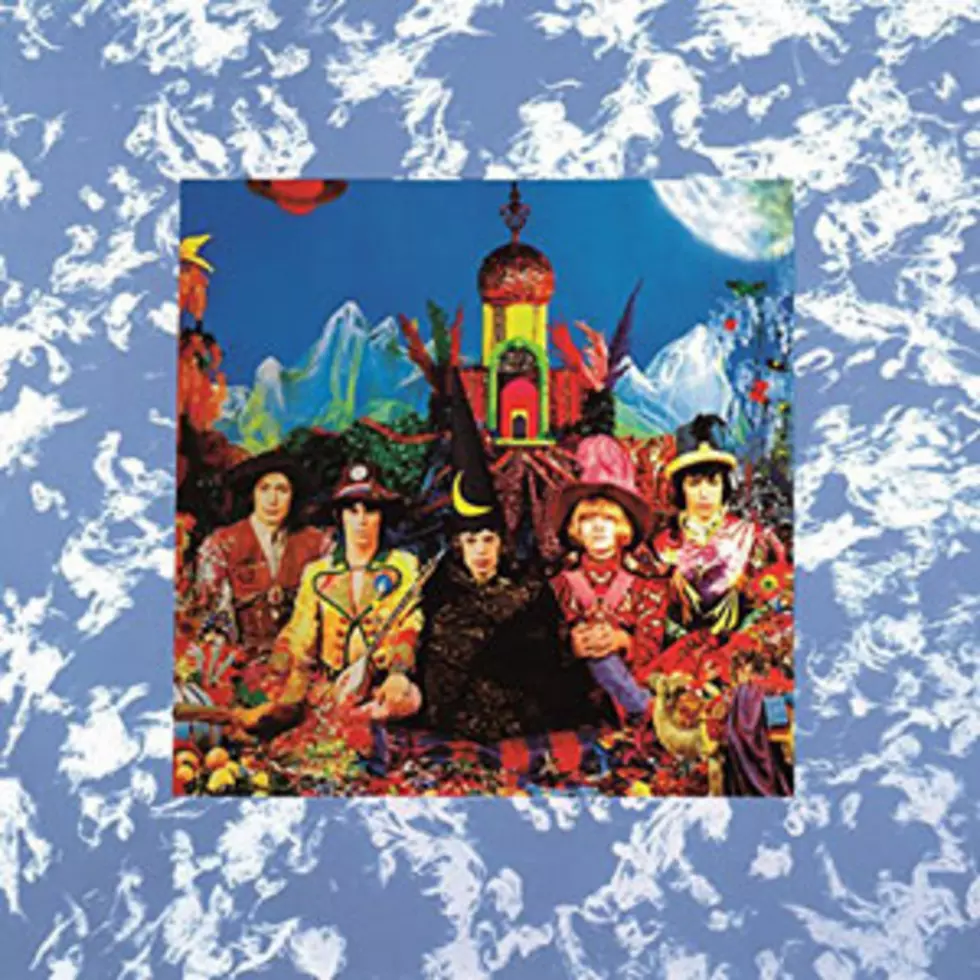
The Rolling Stones, ‘Their Satanic Majesties Request: 50th Anniversary Special Edition': Album Review
When Their Satanic Majesties Request came out in December 1967, fans asked, "Where did the Rolling Stones go wrong?"
Released six months after the Beatles' similar, but way more culture shaking, Sgt. Pepper's Lonely Hearts Club Band, Satanic Majesties seemed like a tossed-off afterthought at the time, the second-greatest band in the world's take on the Summer of Love pop-art masterpiece. Besides, what business did a blues-based group like the Stones have with frilly psychedelic music anyway?
The rebound was the following year's Beggars Banquet, a back-to-basics triumph that also happened to kick off one of rock's longest winning streaks. But nobody at the time knew what was right around the corner. So, 50 years later, where exactly did the Rolling Stones go wrong with Their Satanic Majesties Request? Fact is, they didn't.
Looking back at the album five decades down the road with the 50th Anniversary Special Edition, it's clear now that the Stones' psychedelic detour was just another progression on the path they started with 1966's Aftermath and continued on 1967's earlier offering, Between the Buttons. Their Satanic Majesties Request isn't a perfect record, but it's a lot better than most people, including the Stones themselves, gave it credit for in 1967.
The anniversary set includes mono and stereo vinyl LPs, mono and stereo Super Audio CD versions, a booklet and the album's original 3D cover art. The Stones didn't have too many leftovers in their vaults, so you won't find any bonus tracks here. But the mono mix, which Mick Jagger claimed was vastly superior, sharpens the material enough to shed new light on Satanic Majesties. Again, it's not a perfect record, but it's far from the kaleidoscope-eyed-stumble reputation that has dogged the album for so many years.
Like Sgt. Pepper, its main reference point, Their Satanic Majesties Request is a loosely tied together concept album about the psychedelic revolution that was being stirred around in 1967. And like Sgt. Pepper, it's held together more by related musical foundations than a unified theme. There's not much difference between the two versions of "Sing This All Together" that open and close Side One of Satanic Majesties and the title track and reprise that bridge and (almost) bookend Sgt. Pepper.
Of course, Sgt. Pepper got there earlier (as did other albums from that great year), and it's the more fluid record, but parts of Satanic Majesties sound like contemporary companion pieces without the dusted-off nostalgia that occasionally seeps into the Beatles album. "She's a Rainbow" and "2000 Light Years From Home," particularly, come off as studio-kissed highlights of the era.
Other songs, like "Citadel," Satanic Majesties' toughest cut, slip into the mix in ways that make it seem like the Stones knew what they were doing all along (various members over the years have claimed the band was distracted and directionless during the making of the album). Even bassist Bill Wyman's "In Another Land," which he wrote and sings, and which includes little input from Jagger and Keith Richards, is an integral part of the LP's pattern when you hear it in context, though it made a lousy, and barely charting, single at the time.
A lavish 50th-anniversary package probably isn't going to change anyone's mind about the album, mostly because anyone who's going to spend money on it is already knows it's not the embarrassing disappointment cynics claim. Time has softened those blows; Their Satanic Majesties Request holds up better than many other beloved works from the era. Open your ears and you'll hear a key record by one of rock 'n' roll's most important artists on the cusp, once again, of a grand new adventure.
Rolling Stones Compilations Ranked Worst to Best
More From Ultimate Classic Rock









